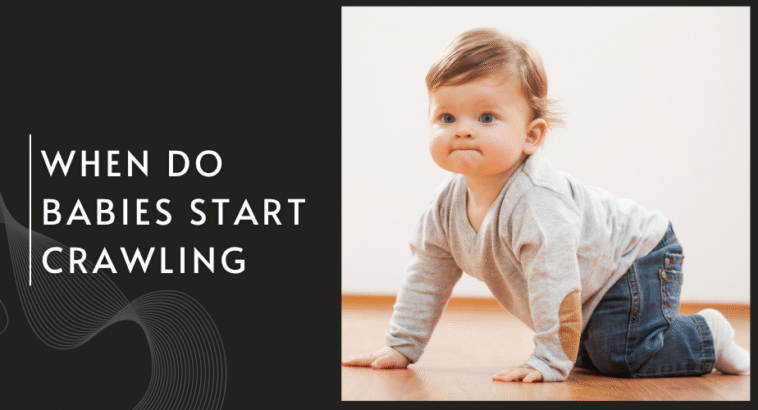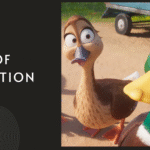Most parents eagerly anticipate the moment their baby becomes mobile, asking, when do babies start crawling? Typically, babies start crawling between 6 and 10 months of age, but this age range is not set in stone. Some infants may crawl earlier, while others might take a bit longer or even skip crawling altogether. The range for when babies start to crawl can feel broad, but recognizing that each child develops at their own pace is essential. Baby crawling milestones are unmistakable stepping stones in infant development, marking a pivotal point in their journey toward independence.
Even before true crawling begins, babies showcase a variety of movements—think rolling over, scooting, and pushing up on their arms during tummy time. These early attempts help develop strength and coordination, both crucial for later crawling. Understanding these pre-crawling behaviors is key for parents tracking their baby’s progress and for identifying when their child might be ready to enter the next stage of mobility.
Baby Crawling Milestones: What to Expect
Key Signs Your Baby Is Ready to Crawl
Recognizing when do babies start crawling involves observing several readiness signs. Watch for your baby pushing up on their hands and knees, rocking back and forth, or reaching for toys in front of them. These behaviors indicate your child is strengthening core muscles and developing balance—two essentials for crawling success. Baby crawling milestones may occur at different ages, but consistency across these signs helps guide parents on what to expect next.
Typical Sequence of Milestones
The baby crawling journey often proceeds in a predictable order: sitting unsupported, rocking on all fours, crawling backward, and then mastering forward movement. Understanding when do babies start to crawl in relation to these steps ensures that any concerns about delays can be quickly addressed. Milestone tracking is a great way to celebrate your child’s achievements and build their confidence as they grow.
Types of Crawling: Not Every Baby Crawls the Same Way
Classic Crawling Styles
When exploring when do babies start crawl, it’s essential to note that crawling styles vary. Some babies use the classic hands-and-knees crawl, while others might prefer an army crawl, dragging their tummies along the ground. Some even invent their own technique—scrambling, bear-crawling, or scooting on their bottoms. All these styles are perfectly normal and reflect the diversity of infant mobility development.
Transitions Between Styles
You may notice your baby experimenting with several crawling methods before settling into one that feels most comfortable. This adaptability is a testament to their growing physical abilities and problem-solving skills. The progression between types of crawling often mirrors the process of learning other new skills—with practice, adjustment, and persistence.
The Role of Tummy Time in Crawling Development
Why Tummy Time Matters
Tummy time plays a crucial role in determining when do babies start crawl. By spending time on their stomachs, babies strengthen neck, back, and arm muscles, laying the groundwork for future mobility. Regular tummy time sessions improve coordination and reduce the risk of positional plagiocephaly (flat head syndrome).
Best Practices for Tummy Time
For optimal results, begin tummy time as early as the first week home from the hospital. Short, frequent sessions throughout the day help avoid frustration and encourage enjoyment. Using engaging toys or lying down beside your baby will make this developmental activity an enjoyable experience for both parent and child.
Crawling vs. Other Motor Milestones: What Comes Before and After
Pre-Crawling Achievements: Rolling and Sitting
Before crawling starts, babies usually roll over from front to back and back to front. Sitting up without support is another major precursor, as it develops balance and muscle tone. Paying close attention to these achievements provides useful clues about when babies start to crawl.
What’s Next: Pulling Up, Standing, and Walking
Crawling is often a gateway to pulling up onto furniture, cruising, and—eventually—independent walking. The way your baby transitions from crawling to these next stages may be gradual, often overlapping as they experiment with new movements and test their limits.
What If My Baby Is Not Crawling Yet?
Understanding Developmental Variations
If you’re worried about when do babies start crawling and your baby hasn’t reached this milestone yet, don’t panic. Many healthy babies skip crawling entirely and proceed straight to walking or other forms of mobility. Variations in crawling time are influenced by personality, physical build, and opportunity for practice.
When to Consult a Pediatrician
Still, there are situations where it’s best to seek medical advice, particularly if your baby isn’t showing interest in moving by 12 months or lacks weight-bearing movements. Early evaluation ensures intervention if needed, offering peace of mind to parents concerned about their child’s progress.
Encouraging Crawling: Tips for Parents and Caregivers
Creating a Supportive Environment
Fostering a safe, spacious, and stimulating space is key for encouraging crawling. Leave plenty of room on a clean floor, provide interesting toys just beyond your baby’s reach, and minimize time spent in activity centers or walkers that restrict movement.
Positive Reinforcement and Play
Use positive language and playful interaction to motivate your baby. Join them on the floor, mimic their movements, and offer enthusiastic praise for every attempt at crawling. These simple steps reinforce the fun and rewards of developing mobility.
Crawling Safety at Home: Essential Tips
Babyproofing for Mobile Babies
Once your baby begins crawling, safety gains new urgency. Babyproofing measures should be in place: cover electrical outlets, install safety gates by stairs, secure furniture, and keep hazardous objects out of reach. Regular safety checks create a secure environment, allowing your baby to explore with less risk.
Supervision and Adaptation
While safety devices are important, they’re no substitute for adult supervision. Get down on your baby’s level to spot potential dangers, and remember to update your babyproofing as your child’s reach expands. Vigilant oversight, combined with proactive babyproofing, provides the best protection.
Delayed Crawling and Other Concerns
Identifying the Signs of Delay
Understanding the average age for when do babies start crawling helps parents spot possible red flags, such as persistent muscle weakness, lack of motivation to move, or asymmetrical movements. Observing other developmental milestones—like social interactions and verbal skills—offers a broader picture of overall growth.
Steps to Take if You’re Worried
If you have concerns, schedule a check-up. Early intervention services, physical therapy, or simply more tummy time may address minor delays. Most children catch up rapidly when given the appropriate support and opportunities to develop at their own pace.
Conclusion: Celebrating Every Step of Baby’s Development
The question of when do babies start crawl fascinates parents and marks a joyful chapter in your child’s growth. Whether your baby follows a textbook pace or forges their own path, remember that every milestone is worth celebrating. Maintain a supportive, safe, and stimulating environment, pay attention to your child’s cues, and don’t hesitate to seek advice when needed. Encourage each attempt with love and patience, and remember that your presence is the greatest motivator for your baby. Ready to support your baby as they crawl into the next adventure? Embrace every moment and enjoy the incredible journey of parenthood.




